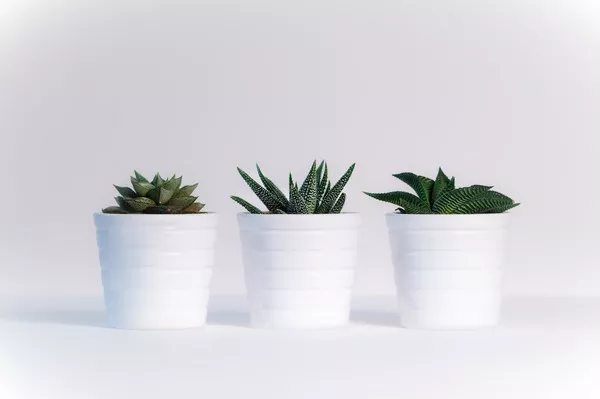Succulents, with their charming and compact forms, have become a beloved choice for indoor and outdoor decoration. Mini succulents, in particular, offer a unique allure with their small size and intricate details. However, despite their hardy reputation, proper watering remains a critical aspect of maintaining these petite plants’ health and vibrancy. This article delves into the nuanced world of watering mini succulents, offering insights, tips, and best practices to help you keep your tiny green companions thriving.
Understanding the Water Needs of Mini Succulents
Watering succulents, including their mini counterparts, demands a balanced approach. Succulents have evolved to survive in arid environments by storing water in their leaves, stems, or roots. Their ability to endure drought conditions makes them prone to overwatering, which can lead to root rot and other health issues.
Mini succulents, being smaller in size, possess even less capacity to store water than larger varieties. As a result, understanding their water needs and adopting a precise watering routine is crucial.
The Importance of Well-Draining Soil
Before delving into watering techniques, it’s essential to emphasize the significance of using well-draining soil. The type of soil you choose can greatly influence your mini succulent’s overall health and moisture management.
Tip: Opt for a specialized succulent or cactus mix, which is designed to promote water drainage and prevent waterlogged roots.
Creating an Effective Watering Routine
1. The “Soak and Dry” Method
The “soak and dry” method is a tried-and-true approach for watering succulents, including mini varieties. Here’s how it works:
Water Thoroughly: When it’s time to water your mini succulent, water it thoroughly until you see water draining from the bottom of the pot. This ensures that water reaches the roots and encourages healthy growth.
Allow Drying: After watering, allow the soil to dry out completely before watering again. Stick your finger about an inch into the soil; if it feels dry, it’s time to water. Avoid watering if the soil is still damp.
2. Avoid Frequent Light Watering
Frequent, shallow watering can lead to shallow root growth and increased susceptibility to drought. It’s better to water less often but more thoroughly to encourage deeper root development.
3. Consider the Season
Mini succulents’ water needs can vary based on the season. During their active growing period, typically spring and summer, they may require more frequent watering. In contrast, their dormant phase in fall and winter may necessitate less watering.
Choosing the Right Watering Tools
The tools you use for watering can make a significant difference in your mini succulents’ well-being. Here are some considerations:
1. Watering Can with Fine Nozzle
A watering can with a fine nozzle allows you to control the water flow and target the soil directly, preventing excessive splashing on the leaves.
2. Spray Bottle
For very delicate or miniature succulents, a spray bottle can be an excellent tool to mist the soil’s surface lightly. This method ensures gentle and even moisture distribution.
3. Bottom Watering
Bottom watering involves placing the potted succulent in a shallow container filled with water and allowing the plant to absorb water through the drainage holes. This method prevents overwatering and minimizes the risk of fungal growth on leaves.
Signs of Underwatering and Overwatering
Understanding the signs of underwatering and overwatering is crucial for maintaining the health of your mini succulents.
1. Underwatering Signs:
Shrinking, wrinkled, or thinning leaves
Leaves turning yellow or brown
Leaves dropping or falling off
Dry or powdery soil
2. Overwatering Signs:
Mushy, translucent leaves
Soft, blackened, or rotting stems
Fungus growth on leaves or soil
Foul odor from the soil
Tips for Watering Different Types of Mini Succulents
Each type of mini succulent may have unique watering needs due to factors like leaf thickness, growth rate, and environmental conditions. Here are some tips for specific types:
1. Echeverias and Rosettes
Echeverias and other rosette-shaped succulents benefit from a thorough watering routine. Water the soil directly, avoiding contact with the leaves, which can be prone to rot.
2. Haworthias and Gasterias
These miniature succulents have thicker leaves and can tolerate slightly more water. However, they still require a well-draining soil and a cautious watering approach.
3. Lithops (Living Stones)
Lithops have a unique growth cycle, with periods of active growth and dormancy. During their growing phase, water sparingly, and reduce watering when they enter dormancy.
4. Sedums and Graptopetalums
Sedums and graptopetalums are often more drought-tolerant. Water them when the top inch of the soil is dry and be sure to avoid waterlogged conditions.
Conclusion
Mastering the art of watering mini succulents requires a blend of knowledge, observation, and patience. Understanding the water needs of these small plants, adopting the “soak and dry” method, and using the right watering tools can contribute to their longevity and vitality. Keep a close eye on your mini succulents, adjust your watering routine based on the season, and be mindful of the signs of both underwatering and overwatering. With dedication and a well-informed approach, you can create an environment that allows your mini succulents to thrive, showcasing their unique beauty in any setting.


